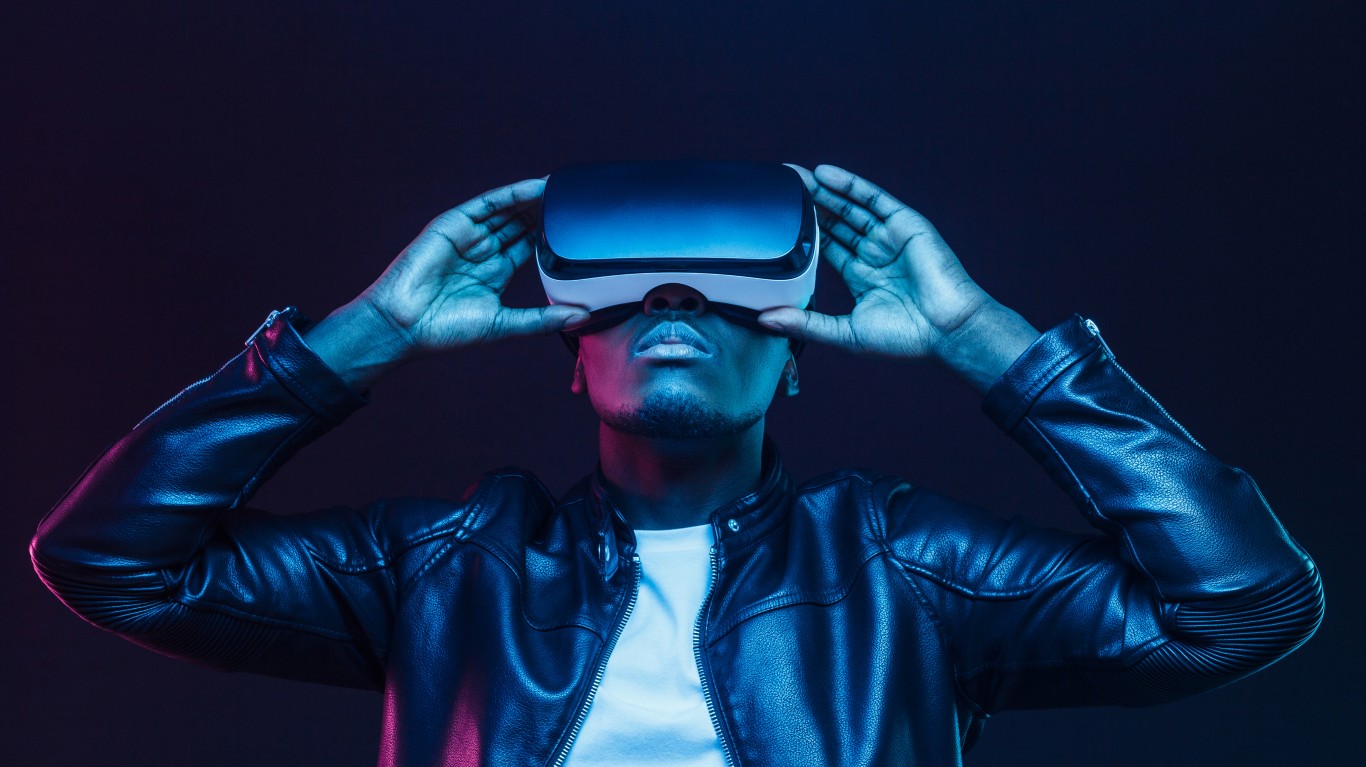
By Deanna Ritchie
In a decade, the metaverse has gone from sci-fi action movies to real-world phenomena. In 2021, for example, Facebook announced metaverse-focused initiatives, and people produced a deluge of metaverse-related material.
One of the big questions is how affordable will the online world stay?
Apocalypse 20
The metaverse is becoming as accurate as the material world. But what is it? To put it simply, the metaverse is a set of virtual environments created for human interaction. This extends beyond games and avatar conversation to buying assets, getting married, traveling, and everything else in between.
Many related fields show how the metaverse influences the actual world, even the luxury sector. Yet, on the surface, the two appear unrelated.
Luxury is all about exclusivity, but how does that transfer when the metaverse is available to everyone?
Metaverse
The metaverse is a technical breakthrough, and technology has always been a luxury.
The two worlds have always been pretty interwoven, from the newest cellphones to high-end accessories. Even in the previous decade, as blockchain technology has advanced, luxury has been conveyed in some form.
Once a revolutionary online notion, cryptocurrencies are now frequently worth hundreds of dollars, with ‘crypto bros’ dominating social media. Having a piece from a top-rated collection is now like owning a Warhol or a Basquiat. This includes everything that people can sell for a high price may become a status symbol, including cryptos and NFTs.
Similarly, Louis Vuitton released a game named Louis the Game to commemorate the founder’s 200th birthday. Players may play as Vuitton and locate some of the 30 NFTs hidden inside the game.
Finally, Burberry collaborated with Mythical Games to create Blankos Block Party. The game features limited-edition Burberry NFTs and is the first time a premium fashion business has entered the gaming market.
While investors debate the notion of NFTs and blockchain, fashion businesses see its potential. Dazzling possibilities await this curiosity in the metaverse, and the possibilities are endless because creators of metaverses loosely base them on the “real” world. Several fashion brands are already dabbling in the metaverse, with fascinating outcomes.
New resources are also emerging to help fashion businesses penetrate the metaverse and NFT. After all, not every fashion brand or designer has the recipes of Gucci or Burberry.
Internet Made NFT Fashion Design
That’s where Internet Made comes in. Internet Made assists designers in creating fashion NFTs and is a new metaverse fashion brand and center. For example, fashion designers and artists, misfits, and crypto enthusiasts express themselves in new ways and prepare for future virtual surroundings.
They intend to minimize unsustainable behaviors in the offline fashion sector, such as high carbon emissions and significant resource waste — “by pioneering a new fashion market and community for global talent,” says Internet Made co-founder Rok Bozic.
People require clothing even if they are simply avatars in an NFT universe. Designers may profit from the paradigm shift thanks to Bozic and his collaborator Tim Brdnik. The fashion industry gets criticism for its waste and carbon emissions. Metaverse fashion now designs, produces, and uses clothes in totally virtual surroundings.
Consumers will have more options to purchase NFT fashion once it releases. Users must often register on a particular platform to acquire NFTs and transfer them to the metaverse. In reality, shopping in malls and stores is much more convenient.
3D Buildings in the Metaverse
Even more intriguing, MetaDojo is bringing this ease to the metaverse. As a result, we have the distribution of 3D buildings to any metaverse, incorporated into websites or even social media channels. Of course, brands may modify the inside, appearance, and other features. This process just seems like a repeat of SimCity — but okay. GamePix has some pretty decent city-building games.
These structures can show NFT collections as stores sell clothing. So users of the metaverse may shop for digital apparel as simply as they do in real life.
This includes virtual events and gatherings. For example, the same building where merchants sell their goods might host fashion runway events. MetaDojo also intends to provide virtual helpers who can serve meals during events. Virtual fashion shows have been popular since the COVID-19 epidemic. Thus, this links everything together well.
This is feasible if customers lack resources and knowledge about crypto and blockchain in general. Thankfully, solutions are emerging. Crypto eXpress, for example, enables customers to not only buy and sell crypto but also send and receive it.
This may imply people may purchase luxury products with Bitcoin just as readily as fiat cash. CryptoXpress also has a built-in NFT market for buying and selling. Because of this, consumers will be more connected than ever.
With the presence of the luxury sector, the area is well on its way to prospering more than ever. According to Sergey Baloyan of the X10 agency, this synergy benefits both producers and customers. X10 is a well-known business that promotes Web3, NFT, and DeFi initiatives.
Consumers gain a lot from NFTs and DeFi, and having it all in one location like the metaverse is even better. People will receive everything they want all at once, he argues.
Looking Ahead
Despite its youth, the metaverse’s future includes fashion. After all, the creators of the metaverse designed it to replicate our contemporary reality. Moreover, numerous firms will offer resources for them to take this digital leap. As a result, this move will bring about a surge of fashion influence in the metaverse.
Consumers will benefit the most since they may now experience the metaverse more freely and fashionably.
Originally published at ValueWalk.
Thank you for reading! Have some feedback for us?
Contact the 24/7 Wall St. editorial team.





